Most home cooks will agree that cast iron skillets and cookware have greatly complemented the backyard grilling station. Whether your cast iron cookware is a garage sale find, Grandma's hand-me-down, or something you picked up at a specialty retail store, this cookware might seem like the best solution for pan-searing a steak on the grill or cooking a cauldron of kielbasa and kraut over an open flame. But is cast iron cookware the best thing you can find for outdoor cooking?
It may be time to retire Grandma's trusty old cast iron skillet and consider a more modern alternative. But before we turn family heirlooms into paperweights, let's take a closer look at cast iron and see if we can find something a bit more contemporary for outdoor cooking.
Introducing GrillGrates
GrillGrates are interlocking panels made from hard-anodized aluminum that sit on top of your grill's cook surface. The panels are flat on one side and have raised rails on the other.
Designed with thermodynamics in mind, GrillGrates have superior heat conductivity and amplify the grill temperature while applying even heat to your food. They are particularly effective for smoothing grill temperatures, evening out the grill's hotter and cooler spots. This ensures that your food cooks evenly and quickly. Furthermore, aluminum is lightweight and easy to handle, making it a convenient choice for cooking grids that can be easily adjusted or removed.
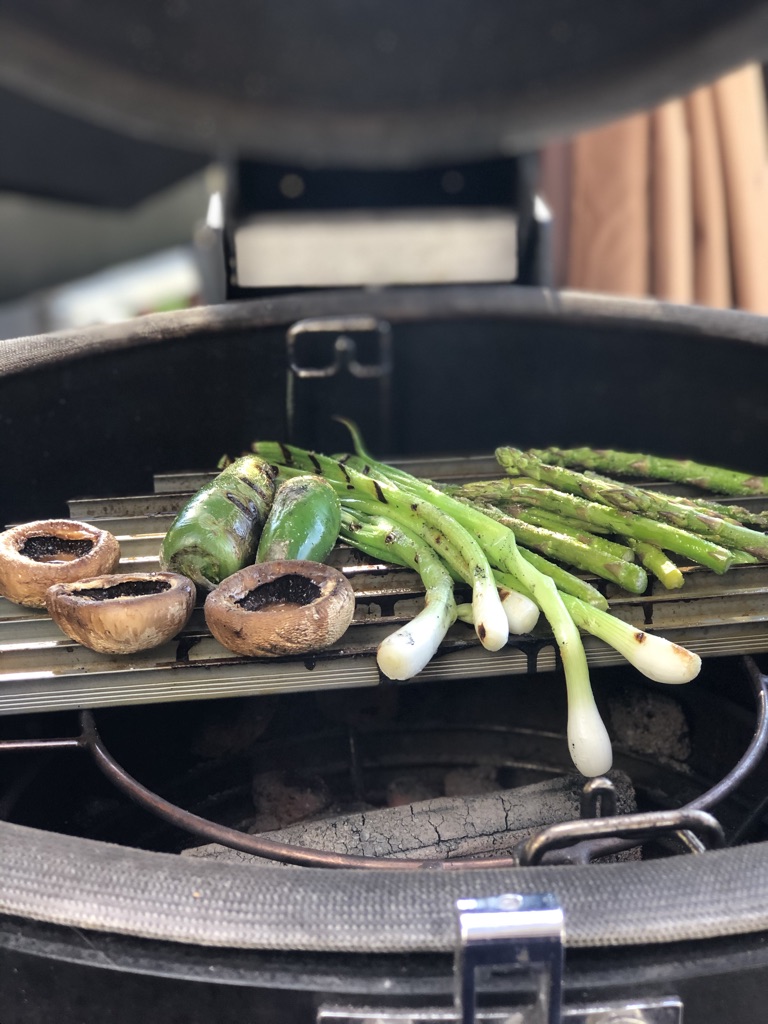
Cooking veggies on GrillGrates
When food sits on GrillGrates’ raised rails, the intensified heat produces steakhouse-quality grill marks. This adds flavor and texture to your food, making the dish more delicious. Food cooked on the rail side also receives the additional benefit of rendering and vaporizing fats and juices. This concentrates the food flavors and intensifies the taste.
Flipped over, GrillGrates cook just as well on the flat side and are great for burgers, fish, and veggies.
Whether you cook with the flat side up or the rails side up, an additional benefit of GrillGrates is that loose items that can typically fall through a grill’s grates, like asparagus, onion rings, and bay scallops, will no longer be sacrificed to the flame gods.
Decoding Thermal Conductivity: Your Guide to Making the Right Cookware Choice
When you're shopping for cookware, you'll often hear about "thermal conductivity," but what does it really mean for you, the home cook?
In simple terms, thermal conductivity measures how quickly a material can transfer heat. A high score (measured in W/m·K or watts per meter per degree Kelvin) means the material heats up quickly and distributes that heat evenly. A low score means the material takes longer and may not distribute heat as evenly.
Understanding thermal conductivity can be your secret weapon in choosing the right cookware for outdoor cooking. Let's explore how the thermal conductivity of hard-anodized aluminum, as used in GrillGrates, compares to traditional cast iron.
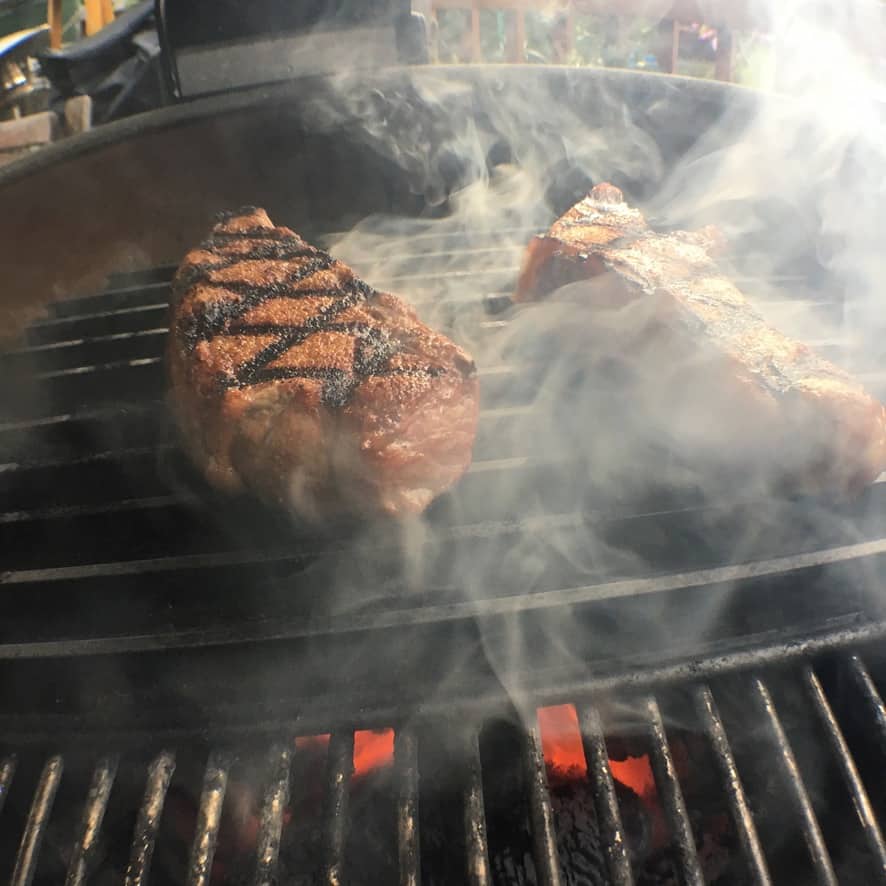
Steaks cooking on GrillGrates
Hard-Anodized Aluminum (GrillGrates): The Quick Heat Maestro
With a thermal conductivity ranging from 130 to 230 W/m·K Source: Matmatch, hard-anodized aluminum is a high scorer.
What does this mean for you?
- Quick Heat-Up: If you're the type who wants to get grilling right away, this material is your friend. It heats up rapidly, making it ideal for quick searing and grilling tasks.
- Even Cooking: High thermal conductivity ensures that heat is distributed uniformly across the cooking surface, eliminating hot spots and ensuring consistent results.
Cast Iron: The Slow Heat Conductor
In contrast, cast iron has a thermal conductivity of about 52 W/m·K Source: Engineering Toolbox, putting it on the lower end of the scale.
What does this mean for you?
- Heat Retention: While heating up takes more time and energy, cast iron excels at retaining heat. This makes it suitable for slow-cooking methods like braising or simmering.
- Inconsistent Heating: Due to its lower thermal conductivity, cast iron can have hot spots, making even cooking a challenge for quick-searing tasks.
The Final Verdict on the Conductivity of Cast Iron and Aluminum GrillGrates
If you're looking for cookware that heats up quickly, offers even cooking, and is easy to handle, the high thermal conductivity of hard-anodized aluminum, like GrillGrates, makes it a superior choice for most outdoor cooking needs.
However, cast iron is a good solution if you're a fan of a surface that takes longer to get to temperate and slower cooking methods. Don't forget you'll be putting in some extra effort when maintaining and handling cast iron. It could still be a worthy option even with its lower thermal conductivity.
Another drawback of cast iron is its weight.
These heavy skillets make them challenging to handle on the grill, especially when piping hot. GrillGrates, conversely, are made from a lightweight, durable material.
Cast Iron is more fragile than you would think.
One common cause of cast iron breakage is thermal shock.
This occurs when the material is exposed to extreme heat and rapid cooling. For example, placing a hot cast iron pan in cold water can cause it to crack due to rapid contraction.
Another factor contributing to cast iron's brittleness is its high carbon content. While carbon gives cast iron strength and durability, it also makes it susceptible to cracking.
Cast Iron routine maintenance.
Regular maintenance is crucial in keeping your cast iron cooking products in top condition. This includes cleaning them after each use, drying them thoroughly, and applying a layer of protective oil to prevent rust. Additionally, storing your cookware in a dry environment is advisable to avoid moisture damage.
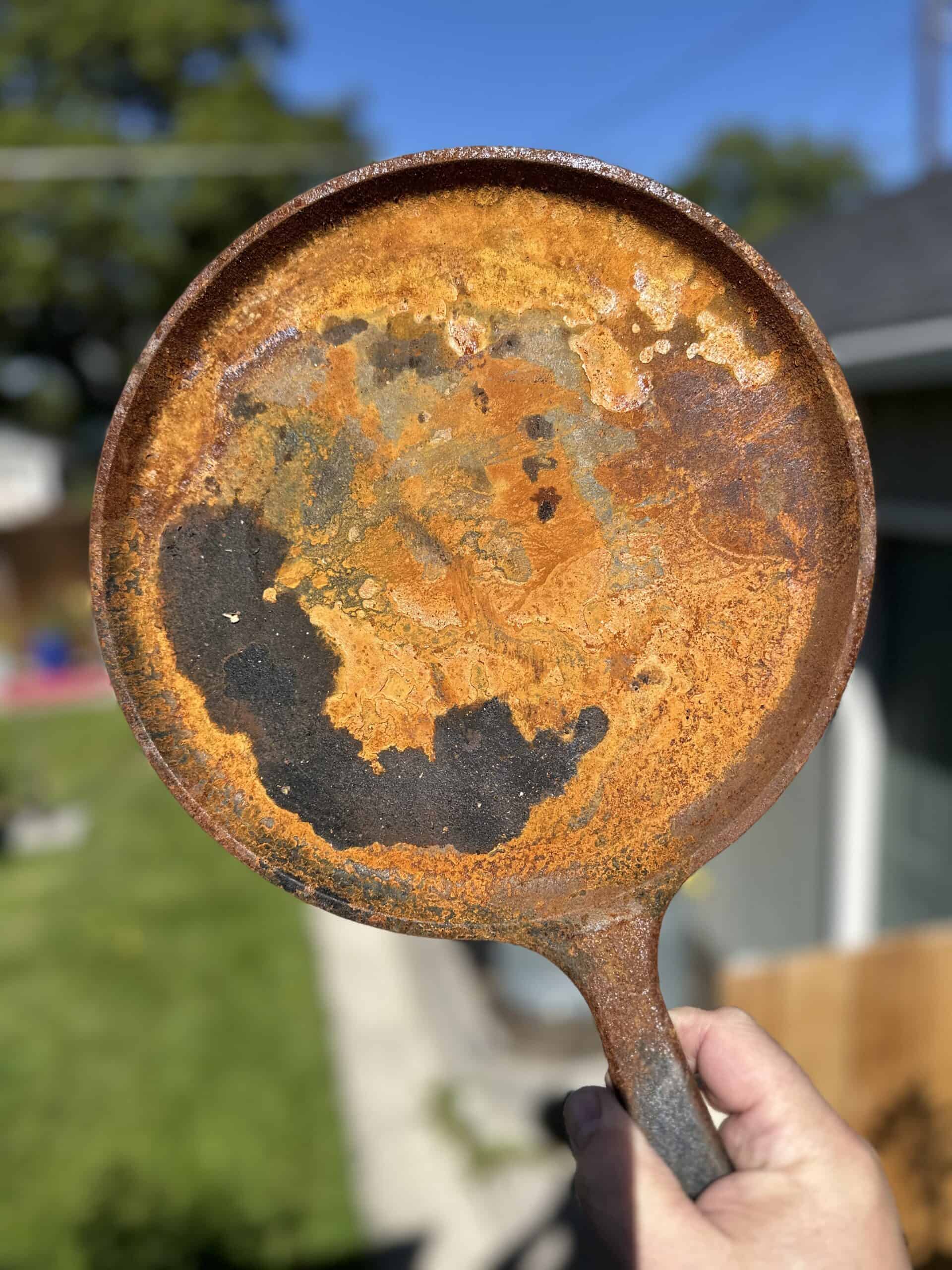
Rust developing on cast iron 72 hours after use.
Cast iron is prone to cracking and chipping if not correctly handled. The metal is quite brittle, and dropping or banging a cast iron skillet on a hard surface can cause irreparable damage, rendering it unusable.
GrillGrates, on the other hand, are self-seasoning. Ready to cook after a quick rinse and pat dry, you can achieve a genuinely non-stick surface on GrillGrates by rubbing the cut side of a raw onion on both sides and allowing the juices to burn away. After a few sessions, you'll notice meats, fish, and veggies release much easier than they would from other surfaces.
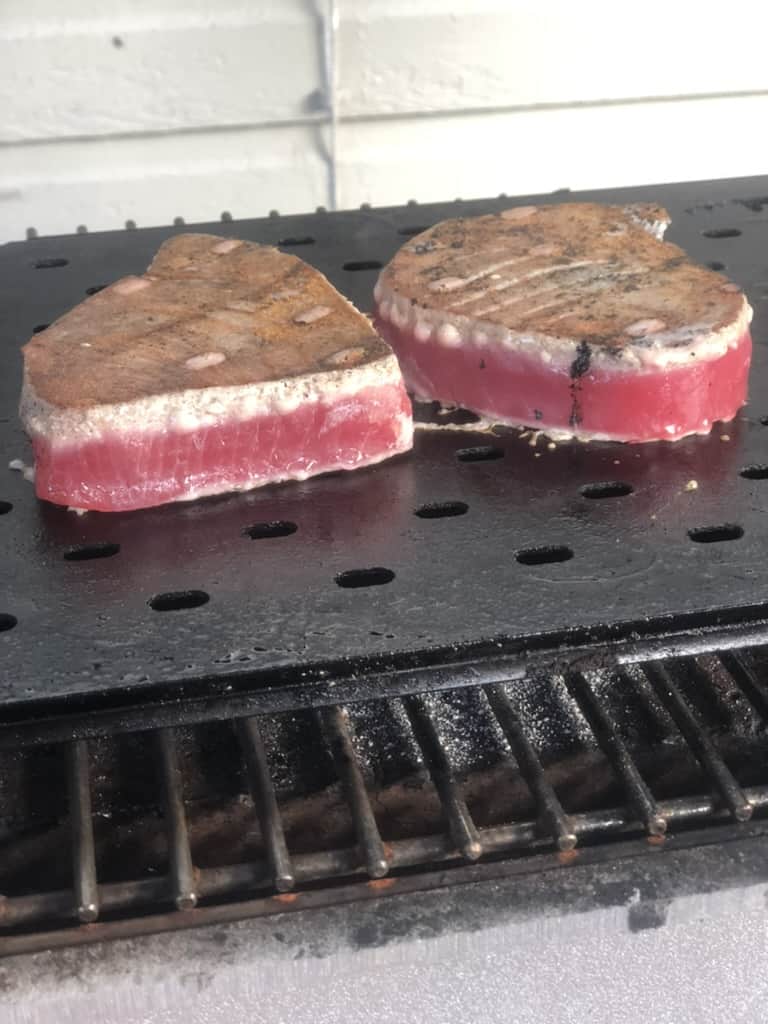
Tuna quickly searing on GrillGrates' flat side.
GrillGrates are also versatile. They can be used on various grills, including gas, charcoal, Kamado, pellet, and more. So, whether you're grilling at home or taking your cooking skills on the road to a cabin or vacation rental, GrillGrates are convenient to pack and bring along.
While cast iron cookware has merits, it has its fair share of problems. Compared to cast iron’s heavyweight and uneven heat distribution, plus the special care and attention it requires, the hard-anodized aluminum used in GrillGrates is a superior choice for outdoor cooking.
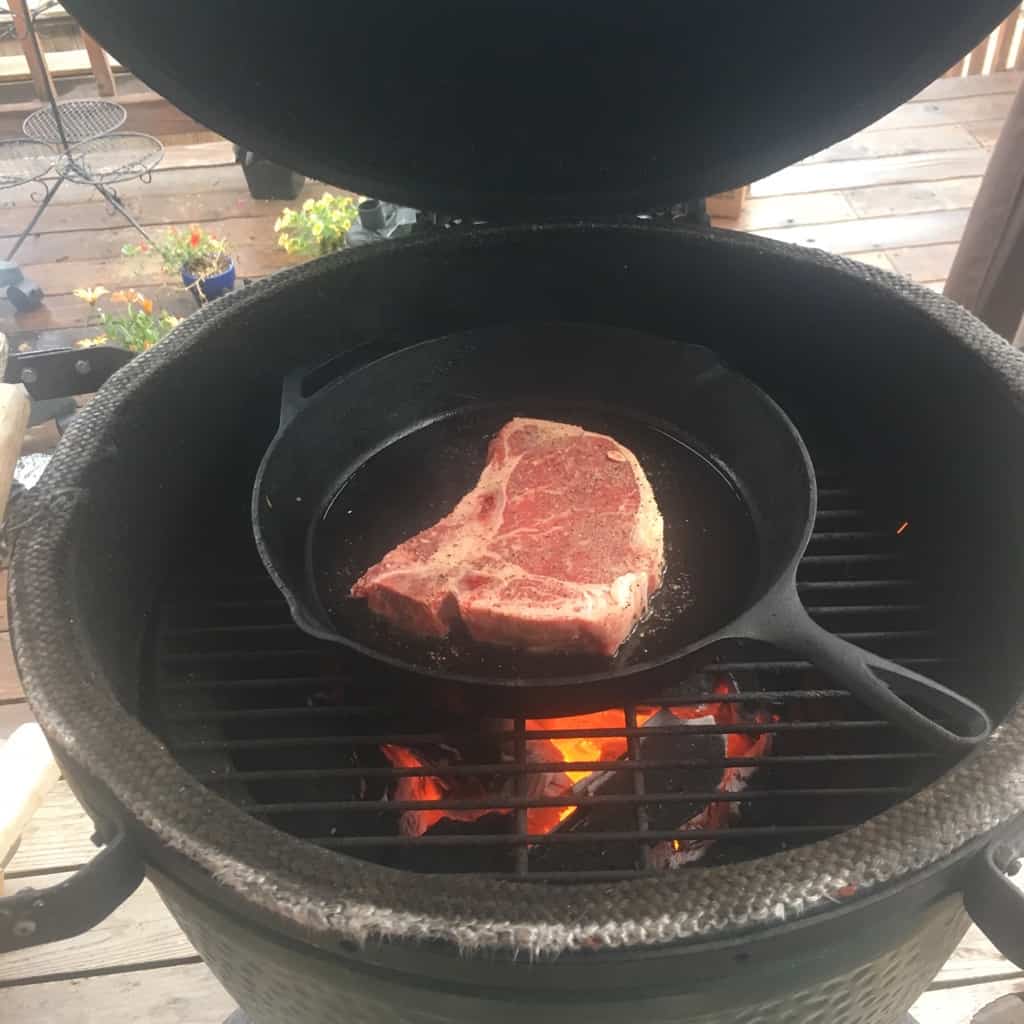
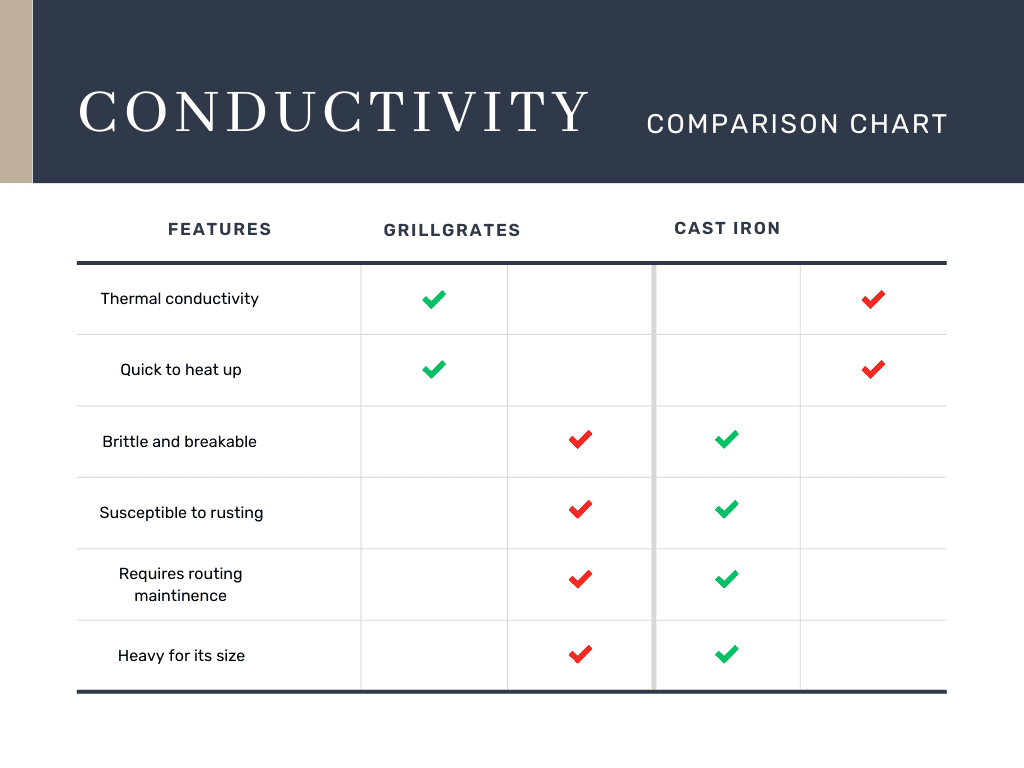
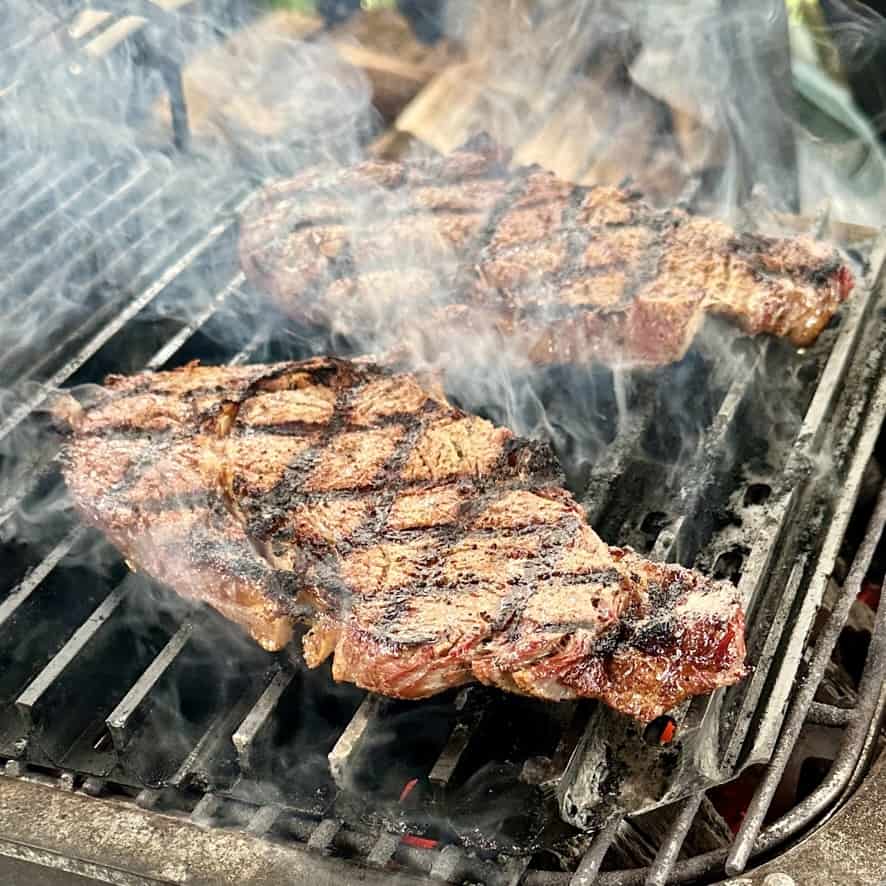
Comments
No Comments